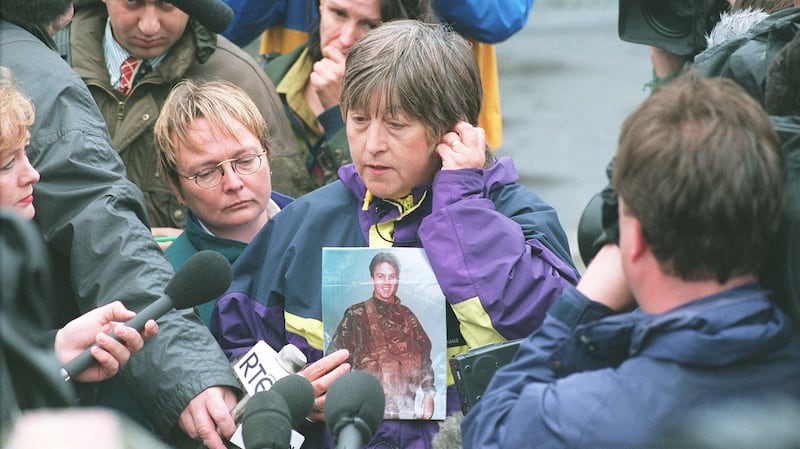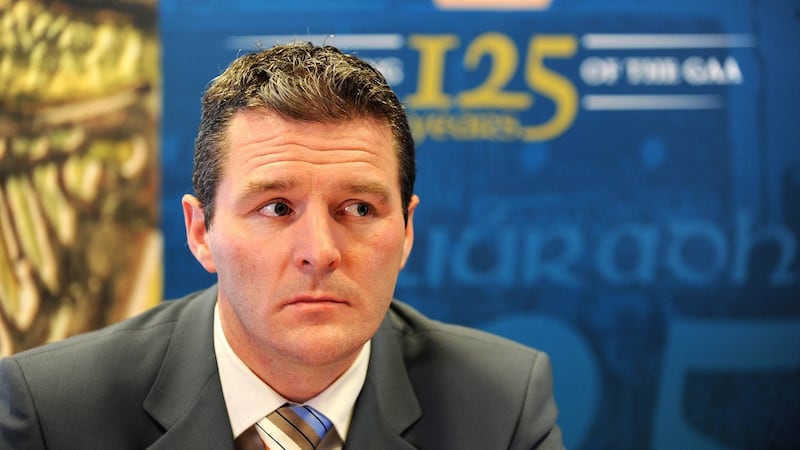The people of south Armagh have a sense of themselves, says Jarlath Burns. “There is a sense of south Armagh that goes beyond it being an ordinary region or grid reference. It is a state of mind within a lot of people as well.”
Today, a teacher at St Paul’s Catholic high school in Bessbrook in south Armagh, Burns was 29 in 1997 at the time of the IRA ceasefire, and in his prime as an Armagh Gaelic football player.
“I remember it being a time of great hope and expectation. I remember us talking in the staff room and saying hopefully this was going to be the end of it, that children coming through were going to have better prospects than the children who were through the school in the years previous to this.”
Lance Cpl Stephen Restorick from Peterborough in England was the last British soldier killed by the IRA in south Armagh. Aged 23 he was shot dead by a single sniper at a checkpoint in Bessbrook in February 1997.

At the time his mother Rita pleaded that there be no retaliation; she hoped his death might be a “catalyst for peace”.
This was the time of the mocking “Sniper at Work” road signs, a reference to the Barrett Light Fifty sniper rifles, which the IRA used to kill nine British soldiers and police officers in south Armagh between 1990 and 1997.
During the Troubles Bessbrook had a dubious record as the busiest helipad in Europe with heavily armed British army Chinook and Puma helicopters regularly taking off and landing in the village as soldiers were flown to places such as Crossmaglen, Cullyhanna, Forkhill and along the dangerous country roads to try to meet the threat of the IRA. The place was so perilous that tall lookout towers were erected on the hills so soldiers could try to keep tabs on the republican enemy. They are all gone now.
Hazardous
Up until the 1997 ceasefire south Armagh was one of the most hazardous places for a British soldier or Royal Ulster Constabulary officer to enter. It was here, during the conflict, that the IRA killed 165 British soldiers and police officers.
Notwithstanding the IRA’s fearsome reputation Lance Cpl Restorick was the only British soldier or police officer killed in south Armagh by the IRA during the period from February 1996 when it ended its August 1994 cessation to July 1997 when it called a final halt to the blood and destruction.
But even now south Armagh has not escaped its Bandit Country tag. That’s for a number of reasons, primarily the fact that fuel laundering remains a multi-million pound criminal industry, and that the police and revenue and customs people on both sides of the Border are unable to crack the problem. Any cross-Border attempts to do so have required huge amounts of back-up PSNI and Garda support.
There is still a bitter residue from the brutal beating and murder by a local IRA gang of 21-year-old Paul Quinn that happened in 2007, a decade after the ceasefire. It was one of the few times that local people challenged the south Armagh IRA hegemony, not that anyone was ever convicted of the murder.
The south Armagh protocol of republican omerta also applied after the 2013 murder in Co Louth of Garda Adrian Donohoe. The chief suspects are said to be from Crossmaglen but if anyone has evidence that would bring all or some of them before the courts it hasn’t been provided to the Garda.

Twenty years ago in the staff room of the 1,260-pupil school of which he is now headmaster, Jarlath Burns felt south Armagh could rise above the past and its violent history.
He is a suitable man to reflect on the ceasefire, to compare 1997 with 2017, and to look with some optimism to the future.
If life had worked out differently, he might have been one of the south Armagh IRA brigade that waged such violence on young soldiers from England, Scotland, Wales and Northern Ireland, and on the police.
“My mother spent most of my childhood trying to keep me out of the IRA. Many of my friends got into it, I didn’t. It was just the by the grace of God that I didn’t. That’s just the way it was in south Armagh. That’s the world in which we lived.”
Ambitions
He says that ultimately “it was the GAA that kept me out of IRA”. He played for Silverbridge in south Armagh and captained Armagh to the Ulster senior championship two years after the ceasefire in 1999. Teaching and Gaelic football have been his life and ultimately he has ambitions to be the president of the GAA. He missed out on playing for Armagh when they won the all-Ireland in 2002. His last game for Silverbridge was a year ago when he was 48.
He points to an area that is changing just as the rest of the North is changing. In the recent past the PSNI chief constable, George Hamilton – “a reasonable and rational person” – for 90 minutes spoke to and took hard questions from Burns’ students. “We are bucking the trend,” says Burns. “More people were recruited into the PSNI from our school than from any other Catholic school by a multiple.”
Burns is a community man who believes in leadership and taking risks. He has brought students to the Orange Order museum in Belfast and when the Co Armagh main Orange Twelfth parade was held in Bessbrook two years ago, St Paul’s permitted 100 buses ferrying the Orangemen and women to park in the school grounds.
“That is the sort of stuff that challenges people but education must be transformational, it must challenge people. So, we try to get people to take risks, and take them out of their comfort zone and into a new place. And it has really, really worked for us.”
He has great faith and hope in young people. “I see very confident children that could be in any part of Ireland, their horizons are broader, their opportunities are better. They are not being judged by their name or their address like their parents and grandparents were. They are children who have grown up far more in touch with themselves, with their own feelings and aspirations.”
Dissident elements
Burns says that, 20 years on from the ceasefire, south Armagh remains solidly republican, the united Ireland aspirations of its people as strong as ever. He acknowledges that there are still dissident elements in south Armagh who would favour a return to the past. But he is emphatic that their influence can’t and won’t prevail. “There is no appetite for ever going back to violence, never, ever; there is absolutely no stomach for it, the war is over.”
He adds, “I would always have argued that the people of south Armagh were a law-abiding people but they were just pulverised by successive British government policies, and now we see the true potential shining through as a people and as a community.”
Burns says south Armagh is a changing place while remaining a unique place. Local people are proud and conscious of that distinction. “I rarely hear young people saying I live in Co Armagh; they say they are from south Armagh, a place apart.”
This article is part of a series to mark the 20th anniversary of the IRA ceasefire. On Tuesday: Freya McClements talks to one IRA volunteer who left violence behind earlier than others.








